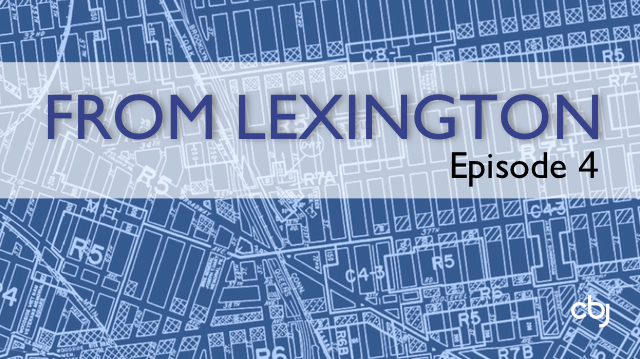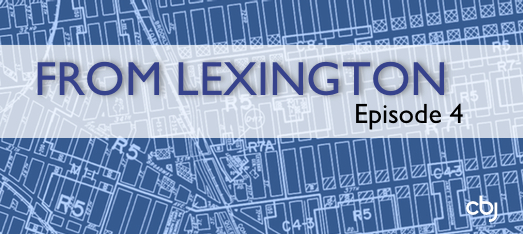
This is the fourth installment in our From Lexington series that chronicles the journey of starting a climbing gym.
by Chris Shotwell
We started looking for a location for L’Escalade while still living in California. Our impulse was to try to shop for commercial real estate in the same manner that we would shop for a house. We registered for Loopnet and began cruising through the available options. As we worked through the process, it became clear that the listings for commercial property typically don’t provide some of the most pertinent information for a climbing gym! At least 70% of the listings that we were looking at didn’t provide a clear height (the distance from floor to ceiling before you encounter obstructions such as fire sprinkler heads, lights or rafters). We decided that we would have to call some brokers and let them handle the fact finding.
Because we had a very clear vision of the facility we wanted, it was easy to set the criteria for our location. We knew that we would require a building with at least 25,000 square feet and a large section with a 50′ clear height. We also knew that we needed a location that was easy to access from multiple points in the city and with significant parking availability. People do a lot of driving in the Bluegrass region; Lexington is definitely not a walkable city.
All of the brokers we contacted immediately balked at finding a building that was well located in Lexington and had 50′ of clear height. Additionally, many commercial brokers don’t seem to want to work with relatively young people. We left messages with many agents that never bothered to return our call, which created serious obstacles to locating someone to work with us. We did eventually find a broker, but it took far longer than we anticipated.
Our research turned up a couple of less than ideal candidate properties, all either lacking the height or parking that we were looking for. After a couple of fruitless months, we discussed our remaining options.
Bad Options, Good Options
At this point, we knew that we would either need to compromise on our offered amenities, pick a shorter building and “pop the top”, or build ground up. Because we are extremely passionate about the programs that we want to offer, we never really considered making major cuts to our offerings. After looking at available real estate, we decided that nothing we saw had the right combination of layout and parking space to make popping the roof a viable option. Additionally, we didn’t want to go through the headaches of major zoning and construction without being able to design and build our dream facility. We finally decided that our best option was to immediately seek out land for development.
Switching gears let us quickly identify some possible sites for our project. We did lots of research through Google Street View and tried to get an accurate idea of what the general area of each site was like. Once we had a few likely candidates, we left California, traveled to Lexington, met with our broker and toured several sites.
These sites were scattered all throughout the city, and varied in general attractiveness and accessibility. We settled on a site that was very accessible and in a fairly industrial area. We contacted our attorney and asked him to write up an offer for the parcel, making sure that we had appropriate contingencies for our development.
Lawyers, Brokers, Offers, Oh My
The first piece of advice we received when we decided to build from scratch was to work with a local real estate attorney. There are several reasons to do so, but there were two that we considered very important. First, we were uncomfortable having a broker write our due diligence requirements. Having to cancel a contract on a commercial parcel for a reason not considered contractually acceptable is very expensive, far more than the additional cost of having an attorney write your offer. Second, depending on the community you are looking to build in, it can be helpful to have someone that has local connections to help push things through. Our attorney was expensive, but we consider the advice and assistance we received to be worth more than what we paid.
The response from the seller on our initial offer was disheartening. Our broker indicated that another offer had been submitted for multiple parcels held by the seller, meaning that it would be quite hard for us to obtain this property. The details of the response basically said that we could have the land if we would give up all due diligence, but this was not acceptable to us. Even more frustrating for us, the other offer was made by a broker that was represented by the same firm as our broker. While this isn’t necessarily improper, we felt like we were getting taken for a ride. We improved our offer financially while maintaining our contingencies, and crossed our fingers.
While this process was playing out, we started to explore our other options. We knew that we would likely be able to win this parcel, but decided that we should investigate alternatives before getting into a bidding war. Our agreement for exclusivity with our broker was set to expire shortly, and we already felt like we were receiving poor communication. What were we doing offering on parcels without knowing that there there was already a very competitive offer? We resolved to wait for our agreement to expire and move forward with a different broker.
Starting Over
After we fulfilled our obligation to our first broker we contacted a highly recommended firm in Lexington about a parcel suggested by our attorney. Our first broker must have overlooked it because they considered it to be too small. However, this latest parcel was located very close to downtown Lexington and was zoned in a way that allowed greater lot coverage. The allowable lot coverage is a percentage of the lot that you can cover with your improvements. In our situation, improvements would be the building, parking, and signs. In reality, it was by far the smallest of the lots we inquired about, but when we factored in the required set backs and easements, this lot was functionally bigger than any other we had seen. The location was far better than the first we offered on: it is blocks away from a university, a couple miles from the center of downtown, in an up and coming neighborhood with growing attractions and located right off the major beltway in Lexington. This was exactly the kind of parcel we were searching for.
We canceled the offer on the first parcel and began developing an offer for the new location. This time, we were aware from the beginning that there was competition and decided to include a a provision that our offer was only available for 24 hours. It was almost immediately countered, we re-countered, and it was finally accepted in principle. Some minor negotiation on terms and timing ensued, ending quickly with a signed agreement and the clock starting on our due diligence period.
Confirming the Property’s Potential
The due diligence process for a project of this size has two major stages. Each of these stages must be completed successfully before it is worth continuing pursuit of the property.
First, we had to verify that the property had no existing issues. This meant ascertaining that the title was properly held, there were no environmental issues (such as toxins dumped in the ground,) and the soil was appropriate for supporting the building. Everything checked out, which let us move forward with the next stage of due diligence.
Second, we needed to determine whether we could use the site to operate our intended business. As our facility is an unusual project for Lexington, no zoning exists where it would be automatically approved. We knew from our early discussions with our attorney that the project would be subject to a Board of Adjustments hearing. We began the process by having general site plans assembled by a local architectural firm. This allowed us to show that we could erect a properly sized building and supply adequate parking on the site.
As part of the process we had to prove that the building and its operation were appropriate and non-disruptive to our neighbors,such as providing a plan for screening the lot from our residential neighbors. Additionally, the Planning Commission had to review the shadow cast by our building to ensure that the building would not cover someone’s home in a perpetual shadow. Fortunately for us, due to the orientation of the property and our design requirements, the 50′ section of our building would be located as far away from our neighbors as possible, which put the shadow of the tall portion fully on our property.
Neighborly Relations
Our attorney suggested that we meet with our potential neighbors in an open forum to ensure that we provided clarity on the project before our formal meeting with the Board of Adjustments, where it is typical for them to ask for any objections to the proposed project. If the community doesn’t understand your design and operations, they are far more likely to object. This open forum would give us an opportunity to directly address concerns and make necessary changes in advance of our Board of Adjustments meeting.
The meeting was held in the backyard of the ‘unofficial mayor’ of our adjacent street. As the meeting got underway, it was instantly apparent to me that people were most interested in understanding our operations and having their anxieties heard. Nicole and I mingled with the local residents to make sure all their worries were addressed.
The most comical concern relating to our project concerned a famous stray dog named Smiley Pete that hung around downtown in the 1950’s. There was major disquietude by the people of Lexington that Smiley Pete was buried on the parcel we were buying, and that his body would be disturbed during our construction. We fortunately were able to sidestep this issue; Smiley Pete is buried on the adjacent lot, not ours.
We also heard concerns about the staying power of our business, the security of our premises, getting a speed bump on the street to slow down cut-through traffic, the location of our dumpster and whether Nicole and I would be involved in the day to day operation of the business. Through our discussion we were able to satisfactorily address all of their concerns, which set us up to go into the meeting with the support of our neighbors.
Approval
Finally, we arrived at the Board of Adjustments meeting. As the review of our case got underway, we realized that all potential objections had been settled at our open forum meeting. Twenty minutes of questions and answers on whether we were planting conifers, what types of lighting we were using, and how we would coordinate with the local community ended in a vote on the project — it was unanimously approved.
Following a brief period allowed for appeal, we showed up to close on the property. We were fully anticipating being downtown for a couple of hours and planned our entire day around the event. The actual time to close was about 30 seconds! After months of effort we walked out the door with full ownership of the property.
From Lexington is a CBJ original series written by Chris Shotwell about the trials and tribulations of opening the L’Escalade Climbing in Lexington, Kentucky.

Climbing Business Journal is an independent news outlet dedicated to covering the indoor climbing industry. Here you will find the latest coverage of climbing industry news, gym developments, industry best practices, risk management, climbing competitions, youth coaching and routesetting. Have an article idea? CBJ loves to hear from readers like you!







